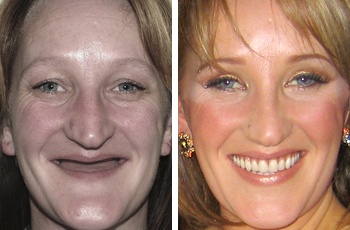Researchers from Taiwan have designed a tooth that can gather data on mouth movements and transmit it to a computer or a smartphone.
The device is believed to be of great help to doctors as it can allow them to collect information about patients’ behaviour and their eating habits.
 The artificial tooth resembles a typical molar, the difference being that it has an accelerometer placed inside. It can be worn like an artificial denture to deliver information about the eating habits of an obese patient, for instance, or to inspect a patient’s breathing.
The artificial tooth resembles a typical molar, the difference being that it has an accelerometer placed inside. It can be worn like an artificial denture to deliver information about the eating habits of an obese patient, for instance, or to inspect a patient’s breathing.
The researchers, who now intend to embed a Bluetooth or a Wi-Fi transmitter that can provide information wirelessly, also believe that the device can help patients with speech disorders and even train singers.
The prototype of the device, which is placed in the mouth during cementation procedures for dental implants, is now connected to a computer or a smartphone via thin wires. It needs to be removed for cleaning and battery recharge every day.
The scientists performed tests with the device involving eight patients who were asked to chew, drink, talk and cough to assess its ability to transmit accurate data. The tests proved that the tooth can tell the difference between these activities with an accuracy of up to 93%.
The researchers stated that every device will need to be adjusted in size so that it fits each person and the way their mouth moves when chewing and talking.
Related Posts
THREE DENTAL PROCEDURES THAT HELP OVERALL HEALTH
Preventative Dental Care Can Save Lives Many people are anxious when they visit the dentist, but preventative care is essential not just for ensuring good oral health, but also for reducing the risk of developing more serious conditions such as cardiovascular disease, heart disease, diabetes, osteoporosis, endocarditis and Alzheimer’s disease.
SCIENTISTS DEVELOP METHOD TO REVERSE TOOTH DECAY
Can teeth repair themselves? A team of researchers at King’s College London have developed a completely painless method to reverse tooth decay by encouraging teeth to repair themselves.
The method is still a long way off wide-spread commercial use but scientists believe that the technology could mean that cavities no longer need to be treated with drilling and fillings, particularly cavities in young children.